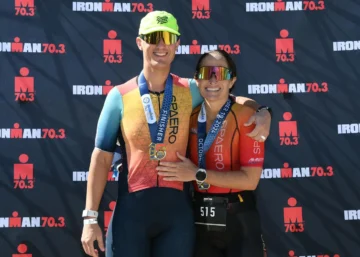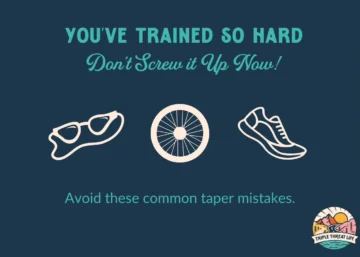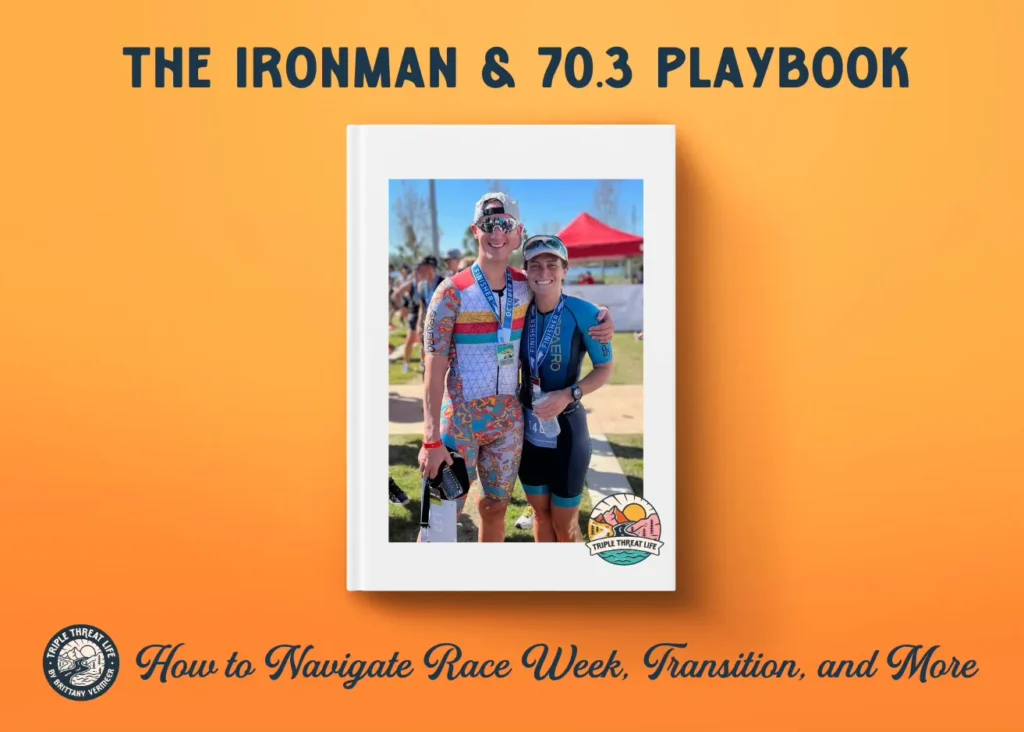
I remember when I did my first Half-Ironman at 70.3 Chattanooga in 2021. It was an incredible experience, but the process was also a bit intimidating.
Long course racing is complex. There are so many parts and pieces. You have the athlete check-in process, a massive transition area, a lot of race rules, aid stations to navigate, and much more.
For a first-time 70.3 or Ironman triathlete, it can be nerve-racking.
Since that first finish, my husband, Matt, and I have competed at races all over the country.
- 70.3 Chattanooga (a favorite!)
- 70.3 St. George (IM World Championship)
- 70.3 North Carolina (another favorite!)
- 70.3 Florida (where we got engaged)
- 70.3 Maine
- 70.3 Augusta
- Ironman Florida (first Ironman)
So we’ve created The Ironman and 70.3 Playbook, which contains everything you need to know for doing your first long course triathlon (or your fifth) with insights and tips for how to better navigate check-in, transition, race week, and more.
This isn’t an “official guide.” It’s from an athlete’s perspective: someone just like you who has the tendency to freak out during race week, get the taper crazies, and just wants to feel confident, crush anxiety, and dominate race day.
We will cover pre-race, race day, and post-race essentials. Let’s get started!
Pre-Race
Every race, whether it’s a 70.3 or Ironman, will have an event schedule in the Athlete’s Guide. This is the best place to start, because you can find things like:
- Dates and times for athlete check-in
- Ironman Village (athlete check-in and vendors)
- Availability of bike technicians
- Mandatory athlete briefings
- Bike check-in times
- When transition area opens and closes
- Shuttle bus information
- Times for race start
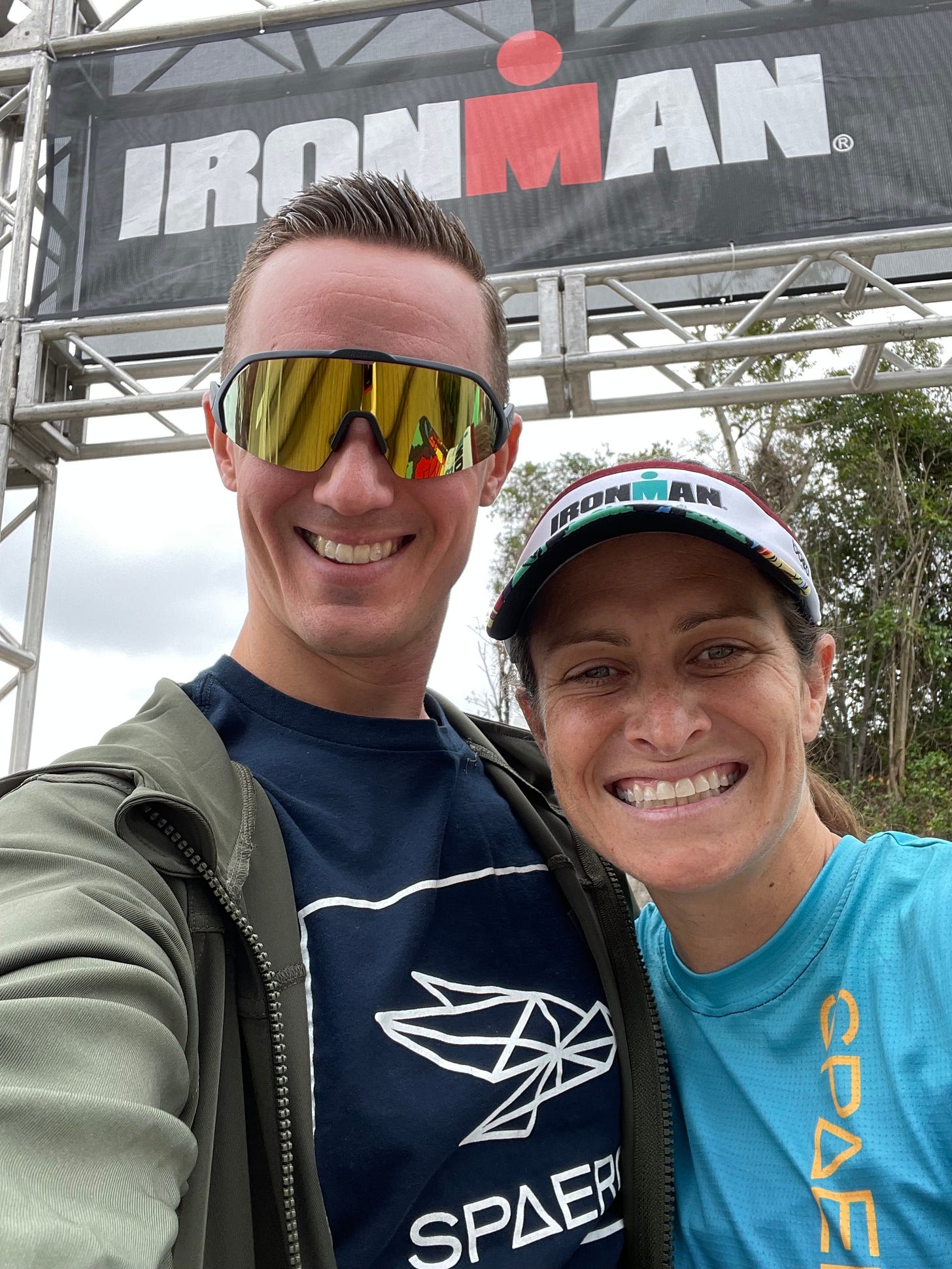
The procedure for race week varies a bit depending on whether the event is a 70.3 or an Ironman. Typically, athlete check-in takes place during the two days prior to the race and mandatory bike check-intakes place the day before the race. Although you will have access to your bike on race morning, you must check in your bike the day before and place it in your transition spot.
TIP: Athlete check-in is almost always not allowed on race day. This is something you must do prior to the race in order to get your race numbers and timing chip. Don’t expect to just show up on race morning, like you would at a local event.
For Ironman races, you will also need to drop off your bike and run bags and special needs bags the day before the race. More on that later.
Athlete check-in at Ironman Village is where you pick up your race packet and numbers. You need to bring a photo ID and QR registration code. TIP: We always screenshot the QR code on our phone for easy access.
During check-in you will sign the necessary waivers, receive your athlete wristband, and race packet. The race packet includes:
- Race bib to wear on the run
- Number stickers for your helmet and bike
- Swim cap
- Bike check-out ticket
- Athlete wristband
- White morning clothes bag
One sticker goes on the front of your helmet. The bike frame sticker goes on your seat post or downtube. It must be visible from both sides. The extra stickers are to label transition bags or other gear.
The bike check-out ticket is used to retrieve your bike from transition after the race. If you’d like to have a friend or family member do this for you, they will need this ticket.
The wristband is important because it’s what grants you access into transition and must be worn all weekend to access athlete areas.
The white morning clothes bag is for race morning personal items. You can pick it up after the race. We use this as a “swim bag” to carry our wetsuit, goggles, and swim cap to the race start. Then, you can put your morning clothes, shoes, water bottle, ect. in the bag and drop it off at the swim start.
*Some races have additional transition bags. A 70.3 with a split transition (where T1 and T2 are located in different places) will have a bike bag and a run bag. A full Ironman will have 5 bags total: morning clothes bag, bike bag, bike special needs bag, run bag, run special needs bag. Planning a future post explaining what to put in these bags.
TIP: You can mark your transition bags by putting colorful tape on them, but you can’t have any items dangling off that might interfere with other athletes. I like to use clear packing tape to affix my race numbers to the bags, because sometimes the stickers can fail.
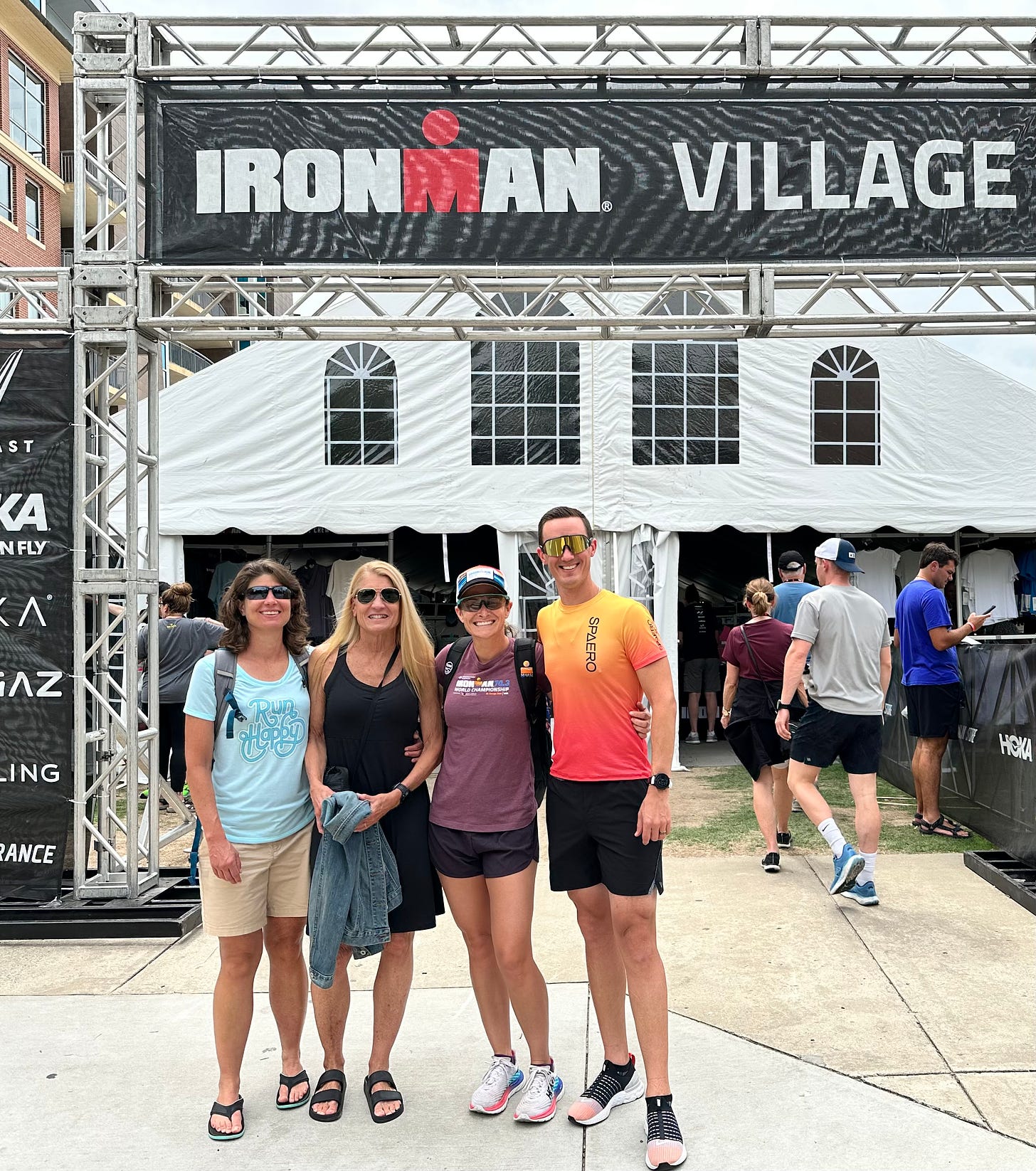
You don’t receive a timing chip until you check in your bike. You wear the timing chip on your ankle, and it tracks your progress throughout the race providing you with an official finisher’s time. You need your QR code to pick up your timing chip.
If you’ve never done a 70.3 or Ironman before, it’s worth attending one of the athlete briefings at Ironman Village during race week. Typically, the race director will give a talk about the race, notify athletes about last minute changes, and often you have the opportunity to ask questions.
Race Day
Race morning is an exciting time filled with anticipation and nervous energy. Be sure to have a well-thought out plan for what time you want to arrive in transition in order to set up your gear and get down to the swim start.
The Athlete Guide will have start and closing times for transition as well as information about shuttle buses to the swim start. If you forget your timing chip or swim cap by accident, don’t freak out. They have replacements in transition.
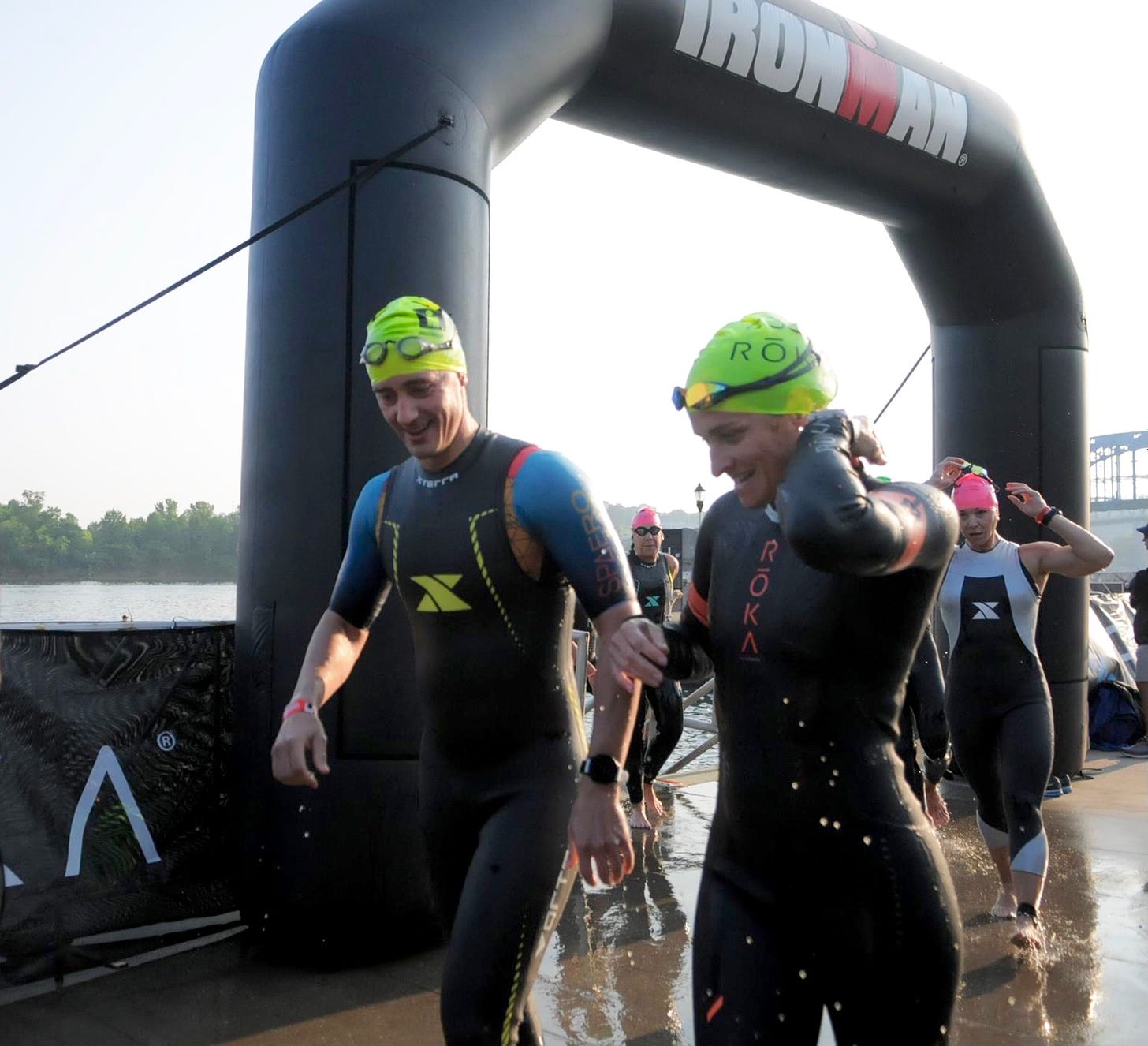
Body marking isn’t required at Ironman races anymore, but make sure to wear your numbered swim cap during the swim, helmet and bike with stickers, and bib number on the run. These are mostly for the photographers, but they also serve as a back up for the timers, and referees will use them if they need to assess a penalty.
TIP: If you get a penalty on course, you must serve it at the next available penalty tent or face disqualification. You can’t wait until the finish line. Yellow cards are 30 seconds and blue cards are 5 minutes. A red card is a DQ. If a race official or referee asks you to do something, comply. Don’t argue and just keep racing. If you believe you didn’t commit an offense, you have the opportunity to dispute certain types of penalties at the finish line.
The most common penalties include touching your bike without having your helmet chinstrap buckled, not wearing a race number, littering, receiving outside assistance, using unauthorized equipment, and drafting.
The Athlete Guide also has course maps and rules, such as the cut-off temperature for wetsuit use, race cut-off times, explanation about drafting (6 bike lengths or 12 meters), serving penalties, and FAQ’s.
Navigating aid stations is something you will do on both the bike and run of a 70.3 and Ironman. This is where you can refuel with water, carbohydrates, and food they have on course. TIP: Don’t try anything new that you haven’t tested in training or be prepared to make a few stops at the port-a-potty if it doesn’t agree with your stomach…
Click here to read: How to Navigate Aid Stations Like a Pro.
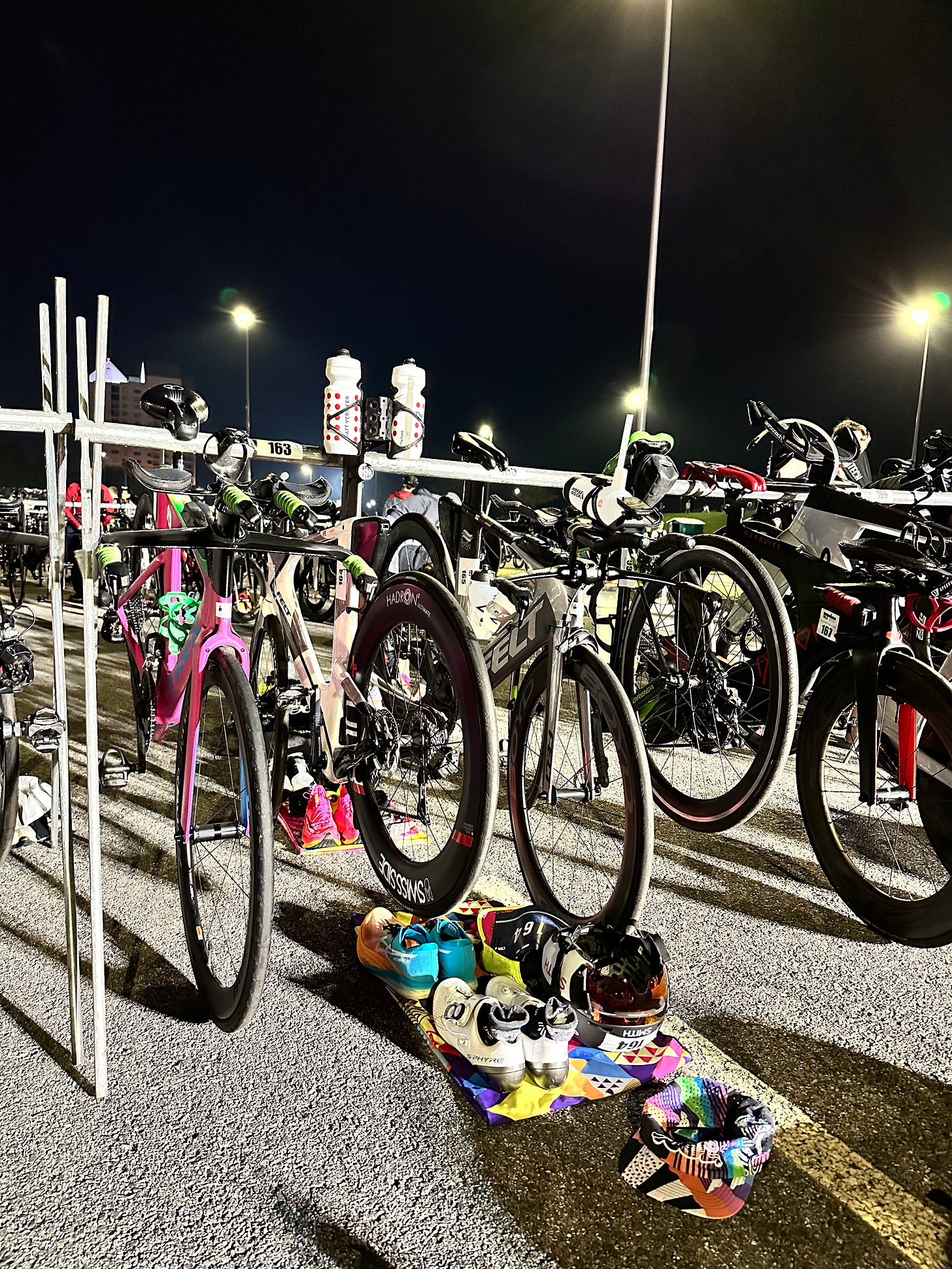
Ironman races are a bit different in that they also have a special needs area at the halfway point of the bike and the halfway point of the run. This is where you can access your special needs bags for extra nutrition, a spare tube and CO2, extra pair of socks, sunscreen, ect.
TIP: Tell friends and family to download the Ironman tracker app. You can track multiple athletes on the race course. The best spectator opportunities are the swim exit, transition, run course, and finish line.
We all want to compete, but if something goes wrong on race day, there are medical personnel standing by. You will not receive a penalty or be disqualified for receiving a medical evaluation or helping another athlete receive medical assistance. But medical transport of an athlete does result in disqualification. During the swim, you can hold on to a kayak; you just can’t make forward progress with it. During the bike and run, you can ask an aid station volunteer to call for medical help.
Also, keep in mind that you can’t accept food or other items from friends, family, coaches, ect. They can’t bike, run, or drive alongside you when you’re on course. Athletes can help each other by sharing nutrition or a spare tube, but you can’t give away something that would prevent you from being able to finish the race yourself, like a helmet.
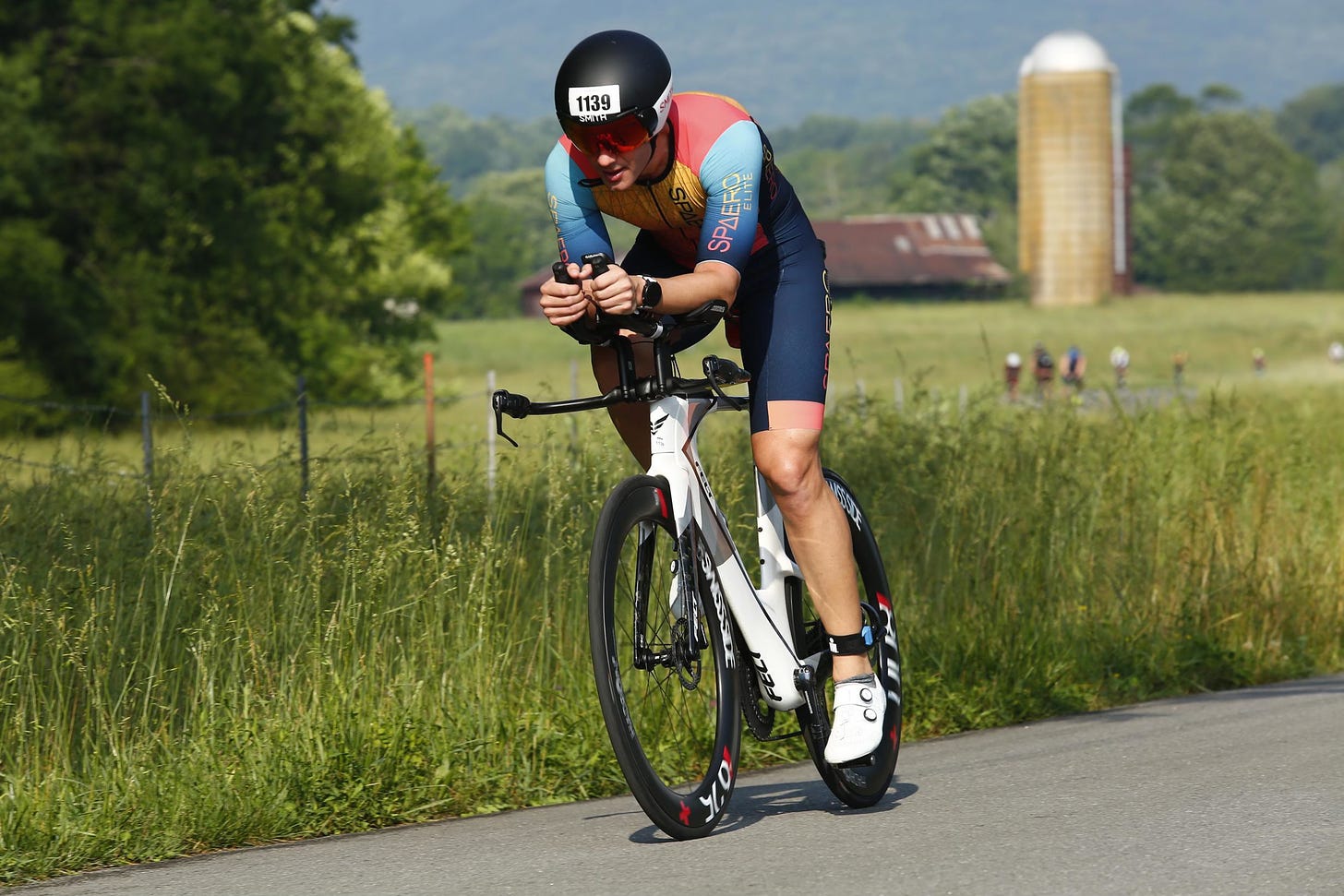
Many people often have questions about what you can wear during a 70.3 or Ironman. Tri suits or separates are obvious choices, but some athletes may change into running shorts and a shirt for the marathon of an Ironman, for example.
The main thing to keep in mind is that you can’t ride or run with a bare torso. This means your chest area must be covered by a shirt, jersey, or sports bra. There’s a quirk though. Tri suits with zippers can be unzipped, so long as they stay attached at the bottom and the top of the tri suit covers the shoulders. Also, tri suits must be fully zipped when you cross the finish line.
Click here to read my interview with IRONMAN head referee, Jimmy Riccitello for further explanation about how the “Zipper Rule” pertains to sports bras.
Finally, it’s time for the finish line! Enjoy running down the red carpet as the announcer calls out your name to the resounding applause and cheers of spectators. You’ve earned it!
TIP: At full Ironman races, look for the first-time finisher’s bell you can ring as you run down the red carpet.
Post Race
Once you cross the finish line, you will receive a medal, and at some races a finisher’s shirt and hat. A volunteer will take your timing chip and you will be directed to have your photo taken at the official backdrop before you exit to greet your friends and family.
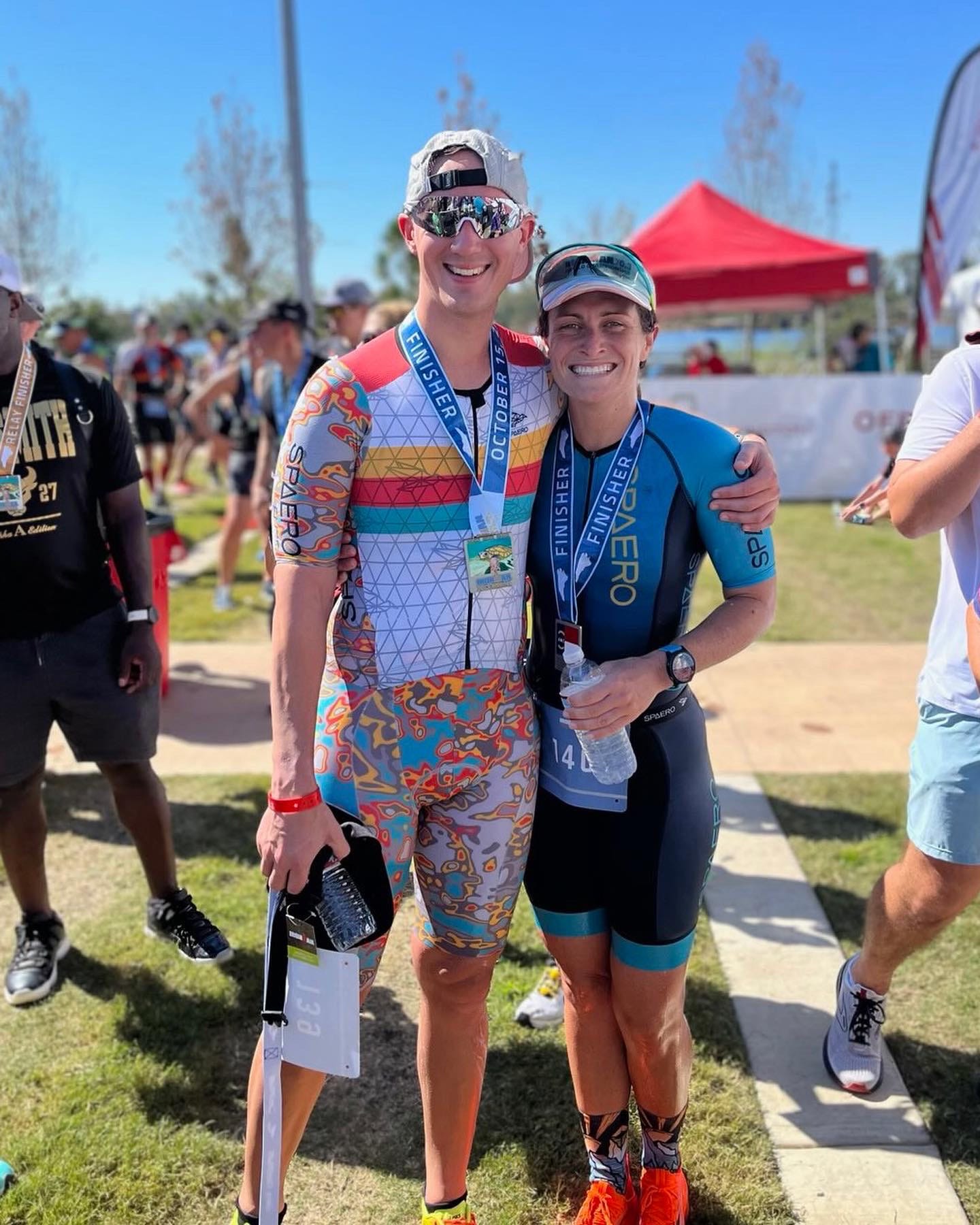
Then, you can go through the post-race food tent. The options are different at every race. In the past, we’ve had pizza, chili, sandwiches, cookies, chips, and fruit.
After the race, you will be allowed into transition to get your bike, pack up your gear, and pick up your gear bags.
The presentation of awards and qualifying spots for World Championships depends entirely on the race. Typically, 70.3 events present awards the same day, while Ironman races present awards the next day.
That about wraps it up! Whether you’re preparing for your first 70.3 or Ironman (or your fifth) I hope you’ve learned skills to help you better navigate check-in, transition, race week, and more.
If you found this helpful, check out these additional resources.
- Download our Triathlon Packing List PDF
- Lessons Learned From My First Ironman Triathlon
- Steal Our Pre-Race Prep Strategy
- “What if the Swim Gets Cancelled?” How to Resist the Trap of What-if Thinking
- How, and Why, to Write a Race Report
*This post is not all encompassing, nor does it provide official word on anything related to Ironman races. Read the Athlete Guide and rulebook for the most updated information for your particular race.
If you enjoyed this post, share with a friend who might benefit.
